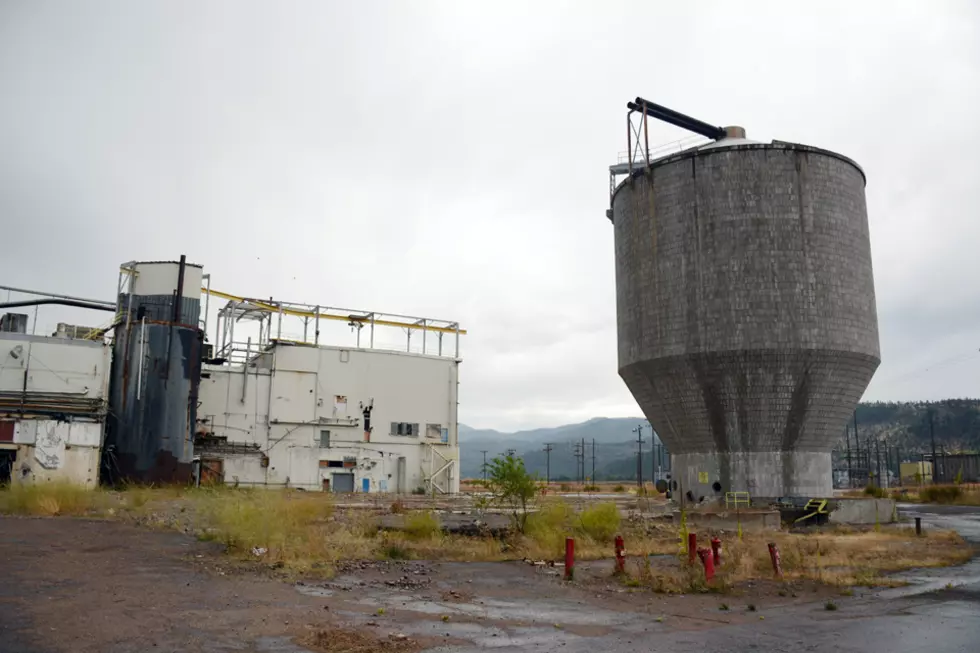
EPA, Missoula County consider two-phase plan for Smurfit sampling
Laura Lundquist
(Missoula Current) Additional sampling at the Smurfit Stone mill site will likely start with the groundwater, sludge and wastewater areas, leaving the Clark Fork River and its fish and wildlife for later.
On Thursday, employees of the Environmental Protection Agency spent four hours going through the tedious process of defining data objectives with Missoula County employees, members of the Montana trustees, and representatives of the organizations responsible for paying for sampling and cleanup.
“CERCLA, our statute that we work under, has very prescriptive processes that help us walk through both characterization and remedy selection. We start broad so we can address every concern under the sun and then we narrow down,” said EPA Remedial Project managers Jamie Miller. “I don’t want you to think we’re talking in these broad strokes now because we don’t want to talk about something you want to talk about.”
In February, EPA Regional administrator KC Becker agreed to have the agency conduct additional sampling of the pulp mill site after Missoula County sent a formal request for more sampling in October.
The Frenchtown Smurfit Stone Community Advisory Group and Missoula County have long questioned the amount and type of sampling that the EPA was using to develop its characterization of the site, which leads to decisions about the extent of the cleanup needed.
During the meeting, for each issue, such as groundwater, the group had to progress through seven steps, including stating the problem - broadly - identifying the goal of the study, deciding which historical data they’d consider, setting physical and temporal boundaries, and then narrowing down to the specifics of what new information would be gathered and how.
But often, as they tried to define the problem for step 1, people would focus on the details, and then be told they weren’t supposed to do that yet. Also some descriptions had to be rewritten because words can have different meanings - does “gradient” refer to the direction of groundwater flow or a change in toxic concentration?
For groundwater, the county representatives insisted that more wells needed to be distributed across the property to determine where contamination exists or doesn’t and the wells needed to be sampled more often than twice a year.
Elena Evans, Missoula City-County Environmental Health manager, said quarterly would be good. Others said monthly would be better.
“Currently, there are around 50 wells on a 1,000-acre site, and they're distributed more proximally to the dumps and sludge ponds,” Evans said. “But the Water Quality District has previously had concerns about the flow paths and how we’re currently using the regional flow path. The complexity inherent in previous mill operations likely also led to contaminants outside of the current flow pathways. So consideration should be given to understanding what each well represents.”
The groundwater isn’t the source of the contaminants - dioxins, furans and PCB’s - it just moves the contaminants. The likely source of the contamination is the sludge, which the group tackled next.
Evans said sludge wasn’t confined to the sludge ponds. Some of it was moved into the wastewater treatment and settling ponds. So the county wants an increased density of samples, both surface and subsurface, in each pond.
Todd Seib, Missoula County Environmental Health specialist, said the sludge wasn’t a homogeneous mix of contaminants, so each pond needs to be sampled in many places.
“If you would have had spills of, say, hydraulic oil that could contain PCB’s or Aroclors, that sludge would be in the sludge ponds,” Seib said. “Looking at bore logs, it’s clear that they’re not this homogenous pile of oatmeal. There’s raisins in there. There’s a bunch of cinnamon in one spot, and at a different depth, you’ve got some walnuts. So we want more sampling of those.”
The discussion of wastewater sampling went somewhat easier. The county representatives said the EPA needed to sample not only the wastewater ponds but also several unlined ditches that once carried wastewater to various parts of the property.
Miller suggested creating a two-phase process. The first three objectives they’d just slogged through - groundwater, sludge and wastewater sampling - would be Phase 1. They could hold off on defining the objectives for passive sampling and biota such as fish and osprey because that would be Phase 2.
Phase 1 could possibly reveal if Smurfit Stone contamination was contributing to pollution in the Clark Fork that would affect the fish and wildlife. If that wasn’t the case, there would be no need to move onto Phase 2.
Also several organizations led by Montana Trout Unlimited will be sampling fish tissue and water this summer throughout the Upper Columbia Basin including the Clark Fork River. So that data could provide important information.
“We phase work plans all the time. But we don’t want to commit to doing something like that unless folks are agreeable to that idea,” Miller said. “Knowing that you have our commitment that we’re not going to not do this work.”
The response wasn’t rousing, but Brian Bartkowiak, Natural Resources Damage Program environmental science specialist, said the trustees would be open to that idea “with the caveat that we use all data that’s available to guide additional sampling.”
No date was set for the next meeting.
Contact reporter Laura Lundquist at lundquist@missoulacurrent.com.
